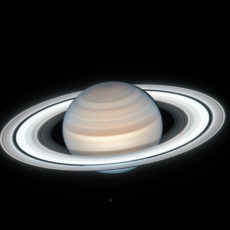
Hubble Space Telescope continues to capture incredible images of the stars despite being in operation for over 30-years. Its latest is of a remote galaxy that has been greatly magnified and distorted by the effects of gravitationally warped space. This molten “Einstein Ring” was measured to be 9.4 billion light-years away, a galaxy at the peak epoch of star formation in cosmic evolution.
Its unusual partial ring-like appearance is caused by a phenomenon called gravitational lensing, which results in light shining from a faraway galaxy to be warped by the gravity of an object between its source and the observer. Albert Einstein first ehtorized this effect in 1912, and later worked it into his theory of general relativity.
- POWERFUL TELESCOPE FOR BEGINNERS: The AstroMaster 70AZ is the perfect entry-level telescope for adults and kids eager to explore the night sky. You...
- HIGH-QUALITY 70MM OPTICS: Enjoy crisp, detailed views through the fully coated 70mm (2.8") achromatic refractor — perfect for observing the Moon,...
- VERSATILE DAY & NIGHT USE: Designed for both astronomical and land-based viewing, the AstroMaster 70AZ lets you explore the stars at night and enjoy...
The initial Hubble observation was first conducted by Saurabh Jha of Rutgers, The State University of New Jersey. His team’s science goal was to use Hubble’s sharp image to reveal detailed complex structure in the ring arcs. The object, GAL-CLUS-022058s, is located in the southern hemisphere constellation of Fornax (the Furnace). The image was nicknamed the ‘Molten Ring’ by Jha, which alludes to its appearance and host constellation,” said NASA.





